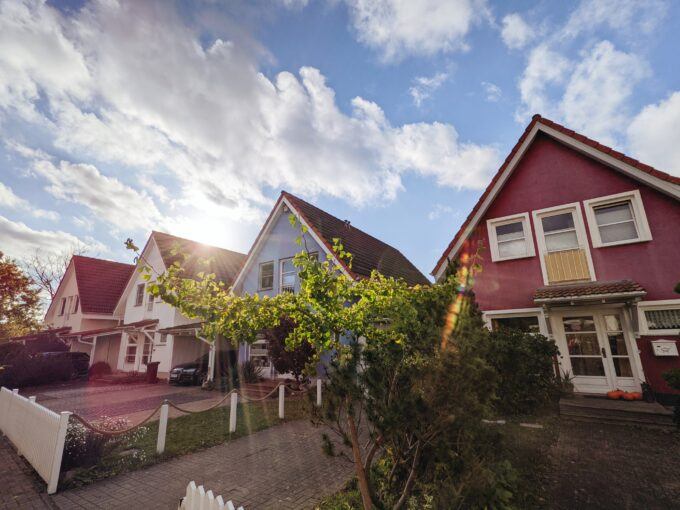
Image by Paul Kapischka.
Growing up white in the 1960s in the United States was, with what we were told were only a few exceptions, to grow up middle class. The meaning of this term was both positive and negative. The positive was it assumed a decent place to live, a father with a good-paying job, a good public school, and a mom who was there for the children when they got home from that school. The negative—which we realized as we reached adolescence—was that this lifestyle was sterile, bleached white, boring, and a pretense that depended on war, racism, and a multitude of other sins in order to exist. In addition, it wasn’t necessarily even real.
The middle class was an opaque shade designed to cover real class differences existing in the United States. Much of the Left had always said as much, but their argument was diminished in the wake of World War Two when Washington and Wall Street, and Big Labor paid off the white working man with decent salaries and a good chance of a life with more than the basics needed to exist. Indeed, this is when the middle class became the popular notion it still is in some quarters of US society. The working class had disappeared into the suburbs and were resurrected in the media and their own minds as the new middle class. The ruling elites looked on approvingly while simultaneously encouraging this belief and continuing their never-ending chase for maximum profit. 
Everything was good in the land. A polity existed that ensured social stability and focused on the personal much more than the political. Sociologists from Vance Packard to C. Wright Mills examined and discussed this middle class in books discussing their easy manipulation by advertisers and the goods they sold. Some of those goods were to make tasks easier—washing machines and dryers, power tools, power lawn mowers—and some were to enhance leisure—televisions, hi-fis, air-conditioning. All of them were designed to make lots of money for those who owned and ran the industries manufacturing these goods.
The prosperity was not universal. In fact, the middle class was understood to be almost one hundred percent white-skinned. African-Americans would never join those ranks on the scale that white people had. Nor would Latinos, Asian-Americans, or those from the indigenous nations. The politics of this so-called middle class were the politics of self-interest. Foreign wars were fine and legal apartheid was ignored. However, if and when its moral conscience was aroused—especially in the case of legal segregation—the politicians eventually responded. Still, as the re-election of Richard Nixon in 1972 and the eventual reign of the Reaganites in the 1980s proved, the middle-class vote was ultimately about keeping the middle class comfortable and as apolitical as possible.
This is the stuff of historian David Roediger’s latest book. Titled The Sinking Middle Class: A Political History of Debt, Misery, and the Drift to the Right, this text provides a brief history of the US middle class, its multiple meanings, and its demise in real-time. Birthed in the 1950s, defined by suburbia and consumerism, jolted by women’s anger informed by a new wave of feminism, rejected for a bit by its children, and ultimately exposed as an illusion; the common denominator of the middle class in all its guises is its actual existence as a distraction from the economic fact that its members are part of the working class. Although Roediger specifically discusses the middle class and its place in the capitalist superstructure only briefly, that discussion provides the foundation for the rest of the text. Perhaps the bottom line to this understanding of the middle class is that the term is used in an attempt to eliminate the Marxist understanding that divides the capitalist political economy into those who exploit labor and those whose labor is exploited. More than just an ambiguous social distinction whose meaning depends on who is using it, the phrase remains an attempt to hide the ever more obvious truth stated in the previous sentence. In other words and without adornment or sociological sophistry, there is a ruling class and there is a working class. Marx and Engels put it this way in the Communist Manifesto: “Society as a whole is more and more splitting up into two great hostile camps, into two great classes directly facing each other — Bourgeoisie and Proletariat.”
As Roediger describes in his text, the concept of a middle class that was outside this dichotomy exists to convince the middle levels of the working class—well-paid industrial workers, technicians and managers, educators, and even some retail and service workers—that their class interests lay with the wealthy class—the owners, their politicians, and governing boards, and not with the working class people in the neighborhood bar on the corner or in the strip mall. As someone who did union organizing work in an institution of higher learning, I can attest to the rejection by many staff and faculty individuals that they were workers and shared more interests with the custodians, HVAC workers and groundskeepers than they did with the top echelons of the administration and the board of trustees. In what I consider a hopeful sign, Roediger refers to a growing movement by many more of those who work in the clerical, technical, educational and even managerial fields to identify as working class and not middle class. The fact that those with wealth and power no longer pretend to be interested in sharing any of their wealth and have concentrated on consolidating both certainly has something to do with this change in how these workers identify. Perhaps it means a genuine political and economic shift is in the offing. Of course, that shift might turn towards fascism instead of socialism rather quickly. Indeed, in the United States, that might be more likely.